Suggestion for The Settlers of Catan game board.
Version of Tuesday 20 May 2014.
Dave Barber's other pages.
Popular for around two decades has been The Settlers of Catan board game (manufacturer, wikipedia). Although the game now exists in many variations, at the heart of the equipment is a layout of regular hexagons made of cardboard, each printed with an image suggesting brick, lumber, wool, other resources, or a desert. These hexagons can be arranged in different ways for variety.
As the hexagons do not have a mechanism attaching one to the next, a frame of interlocking cardboard pieces is provided to surround them and prevent accidental dislodging; this frame also helps implement features of the game such as harbors. This report examines the design of that frame.
| figure A
| This is a schematic of the board that the factory provides in the base edition of Catan, with the six-piece frame (in blue, representing water) surrounding an island formed by nineteen hexagons (here rendered in green; in the actual equipment, many colors).
These diagrams omit many of the details printed on the actual playing pieces in order to emphasize their shapes.
|
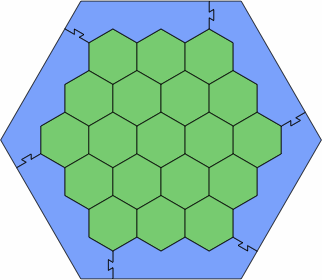
|
| figure B
| There is little practical choice in how to arrange the frame pieces of figure A. Figure B, however, is an equivalent layout introducing two styles of primitive frame pieces, six labeled 1 and twelve labeled 2; the idea is to extend the hexagonal pattern as far as feasible. Some of the Catan expansion sets include pieces similar to frame piece 2.
|
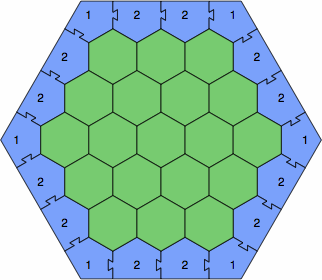
|
| figure C — 14 hexagons
| figure D — 12 hexagons
| The advantage of primitive frame pieces is that some can be omitted to engird a smaller playing area, which might contribute to a shorter game or suit a smaller number of players.
|
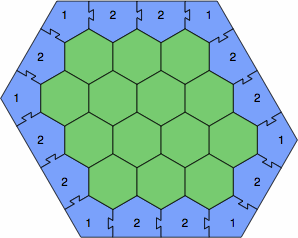 | 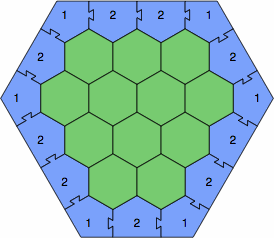
|
| figure E — 7 hexagons
| This tiny board may be helpful in playing the Catan dice game.
|
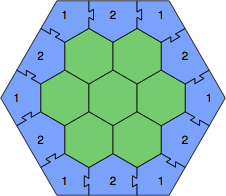
|
| figure F — 16 hexagons
| figure G — 15 hexagons
| These, a diamond and triangle, differ enough from the standard layout that they might lead to a significant change in strategy, if not the rules.
|
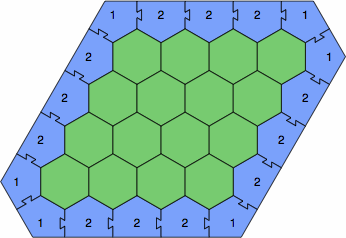 | 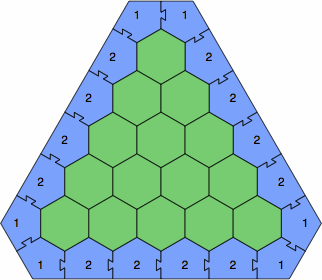
|
| figure H — 18 hexagons
| Frame piece 3 makes possible an overall board shape that is approximately rectangular.
|
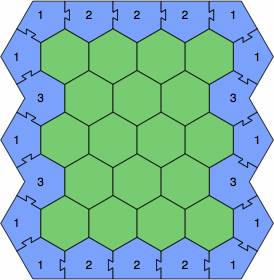
|
| figure I — 30 hexagons
| A ring can be created with a larger quantity of hexagons and frame pieces.
|
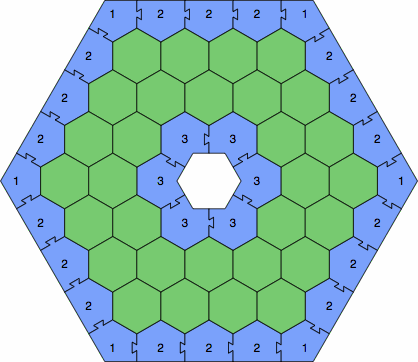
|
| figure J — 13 hexagons
| This snowflake-like design shows how to use frame piece 4.
|
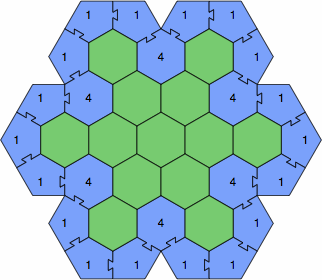
|
| figure K
| Other primitive frame pieces are conceivable, but the four most likely to be useful are recapped here in figure K. There is a system to the numbering: frame piece 1 abuts one hexagon, frame piece 2 abuts two hexagons, et cetera. Incidentally, the numeral need not be printed on the actual frame piece; it appears in these diagrams merely to aid in the explanation.
|
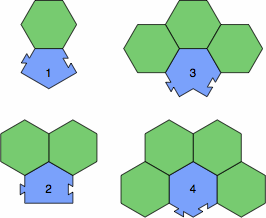
|
| figure L
| figure M
| Important in the 19-hexagon original version of Catan are harbors; each is printed on the frame pieces as the concavity between two projections of a sand-colored shore, which also appears in figures L and M.
Figure L is a schematic of the factory layout, which offers little opportunity for variation. Figure M is the equivalent in primitives.
|
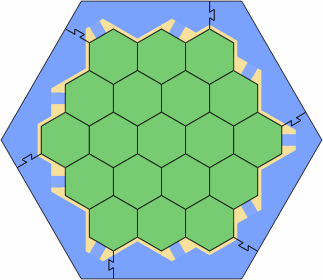
| 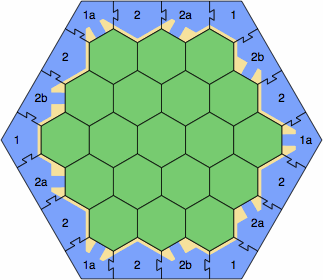
|
| figure N
| This is one of many alternate ways to arrange harbors when primitive frame pieces are used.
|
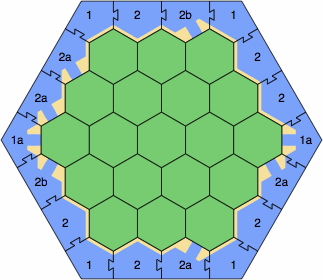
|
| figure O — 36 hexagons
| The triangular hole in this layout splits it into three almost-disconnected sections, which might lead players to use different strategies.
|
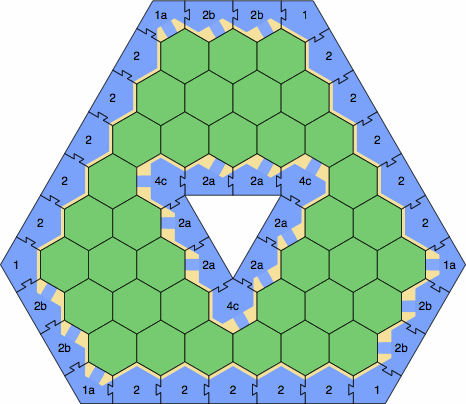
|
| figure P
| Here is a catalog of likely harbor pieces, with non-harbor pieces in the top row for comparison. Each is surrounded by the appropriate number of resource hexagons.
To have two harbors on one frame piece, while possible, is not attempted here because it risks congestion.
|

|
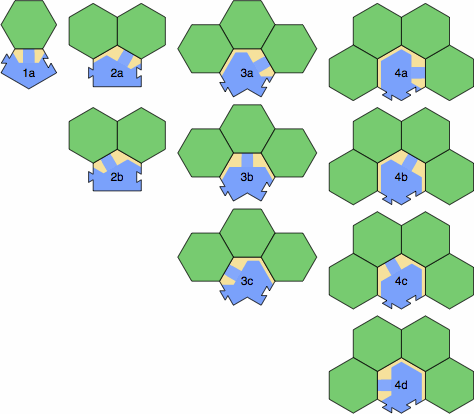
|
| figure Q
| Some of the Catan expansions such as Seafarers use a much larger playing area, with several islands containing resources and deserts. Between them is water (blue) for ships to cross. As with the original game, the factory does not resolve all the pieces into primitives, but figure Q shows how a typical layout would be done. Shorelines are no longer drawn, for the reason given in figure R.
|
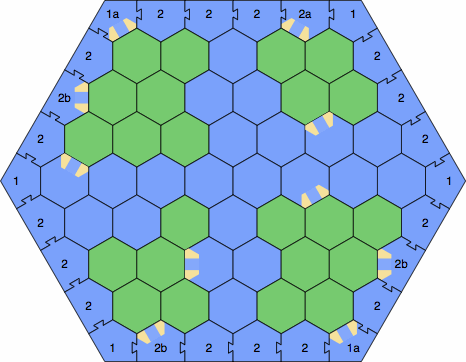
|
| figure R
| For the internal blue hexagons to have all possible combinations of shoreline, 14 different tiles would have to be provided. Beyond that, some shores would have harbors and some would not, entailing even more pieces. If the internal blue hexagons do not show shores, it follows that the frame pieces also should omit them.
|
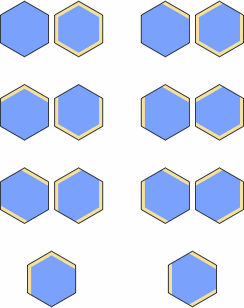
|



















